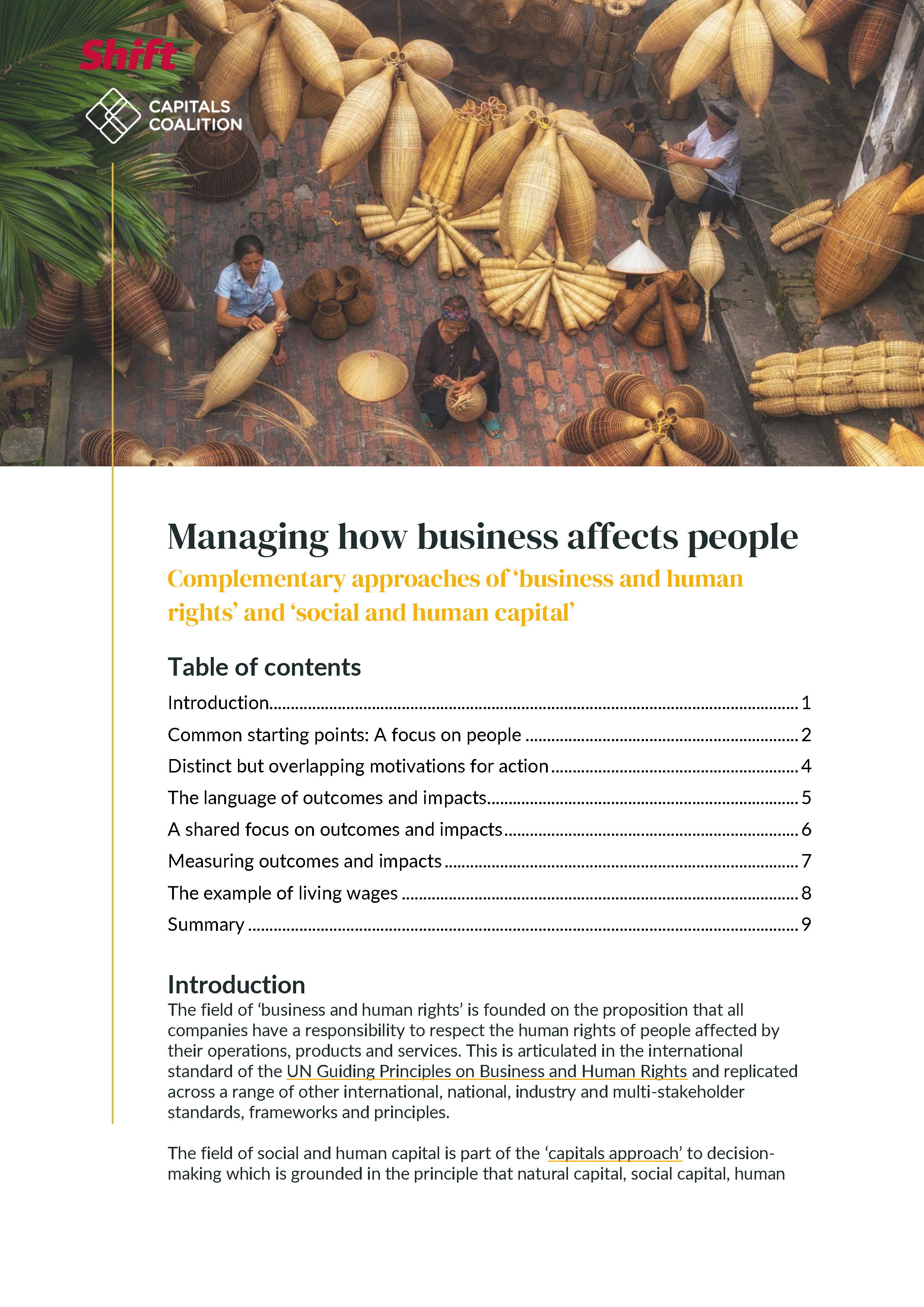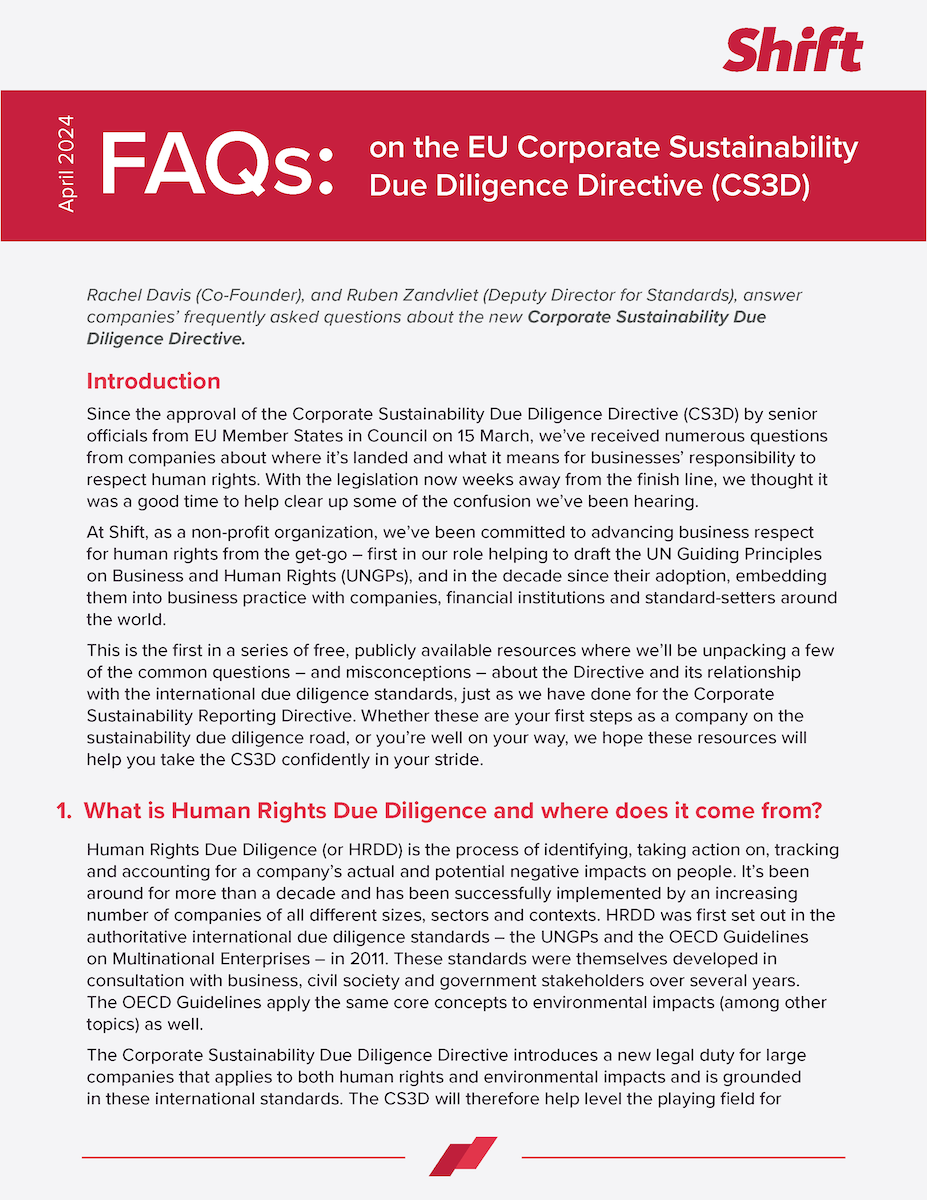The fields of ‘business and human rights’ and ‘human and social capital’ address the management and measurement of business impacts on people – but there is often confusion about where these approaches overlap and where they diverge.
This is partially due to their distinct starting points: the field of ‘business and human rights’ is founded on the proposition that all companies have a responsibility to respect the human rights of people affected by their operations, products and services – this is articulated in the UN Guiding Principles on Business and Human Rights and reflected in a range of other standards. The field of ‘Social and human capital’ is part of the ‘capitals approach’ to decision-making which is grounded in the principle that natural capital, social capital, human capital and produced capital form the foundation of human wellbeing and economic success. By understanding how they impact and depend on the capitals, companies are supported to make holistic decisions that create value for nature, people and society alongside businesses and the economy.
In this paper, Shift and the Capitals Coalition set out the key similarities and differences between the two approaches and outline how they can be applied together to inform business decision-making. This includes a closer look at terminology, outcomes and impacts, and their shared focus on people.




